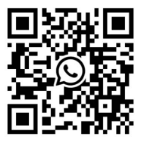Ricoh UV Printer: The Future of Printing Technology
Printing technology has come a long way since the first printing press was invented in the 15th century. Today, we have advanced printers that can print on a variety of surfaces and produce high-quality images with vibrant colors. One such printer is the Ricoh UV printer.
The Ricoh UV printer is a state-of-the-art printing technology that uses ultraviolet light to dry the ink as it is printed onto the surface. This allows the ink to adhere to the surface better and produce a higher-quality image. The printer can print on a wide range of materials, including paper, vinyl, plastics, and even glass.

One of the main advantages of the Ricoh UV printer is its ability to print on non-traditional surfaces. This makes it ideal for printing on promotional items such as mugs, keychains, and phone cases. The printer can also print on curved surfaces, which is not possible with traditional printing methods.
Another advantage of the Ricoh UV printer is its ability to print in white ink. This is particularly useful when printing on dark or colored surfaces, as the white ink acts as a base layer for the other colors to be printed on top of. This results in a more vibrant and accurate image.
The printer also uses eco-friendly ink that is free from volatile organic compounds (VOCs), making it safer for the environment and for those who work with the printer.
In addition to its advanced printing technology, the Ricoh UV printer also has a user-friendly interface that allows for easy operation and maintenance. The printer is also designed to be durable and long-lasting, making it a worthwhile investment for businesses that require high-quality printing.
In conclusion, the Ricoh UV printer is a game-changer in the world of printing technology. Its ability to print on a wide range of surfaces, use white ink, and eco-friendly ink make it a versatile and environmentally-friendly option for businesses. As technology continues to advance, the Ricoh UV printer is sure to lead the way in the future of printing.

